Overview
This article highlights ten essential hiring velocity metrics that startups can leverage to enhance their recruitment processes and boost efficiency. Key metrics such as time-to-fill, time-to-hire, and candidate experience are emphasized, illustrating their critical role in effective hiring. By harnessing AI-driven tools like Websets, organizations can streamline recruitment efforts, significantly reduce hiring times, and ultimately achieve superior hiring outcomes.
Understanding these metrics is not just beneficial; it is imperative for startups aiming to thrive in a competitive landscape. The integration of data-driven insights into recruitment strategies can transform the hiring process, making it more efficient and effective. As you consider these metrics, reflect on how they can be applied within your organization to foster better hiring practices.
In conclusion, the adoption of these hiring velocity metrics, coupled with innovative AI solutions, positions startups to navigate the complexities of recruitment with confidence. Embrace these insights to enhance your hiring strategy and drive your organization towards success.
Introduction
In today's competitive job market, startups confront the formidable challenge of attracting top talent with remarkable speed. Effectively measuring and enhancing hiring velocity can be the decisive factor that distinguishes a skilled workforce from the risk of falling behind rivals. This article explores ten essential hiring velocity metrics designed to empower startups in optimizing their recruitment processes. By doing so, they can fill positions more swiftly while upholding high standards.
What strategies can startups adopt to ensure they remain agile and effective in their hiring efforts?
Websets: AI-Powered Candidate Discovery for Enhanced Hiring Velocity
Websets revolutionizes with advanced AI algorithms, empowering startups to swiftly identify and connect with skilled professionals. This innovative approach enables companies to sift through extensive datasets, significantly improving hiring velocity metrics for startups and allowing for quicker position fills without sacrificing quality. Notably, this AI-driven method conserves valuable time while enhancing candidate profiles with comprehensive details. As a result, recruitment teams are equipped with the best possible insights at their fingertips, ensuring they make informed decisions in a competitive landscape.
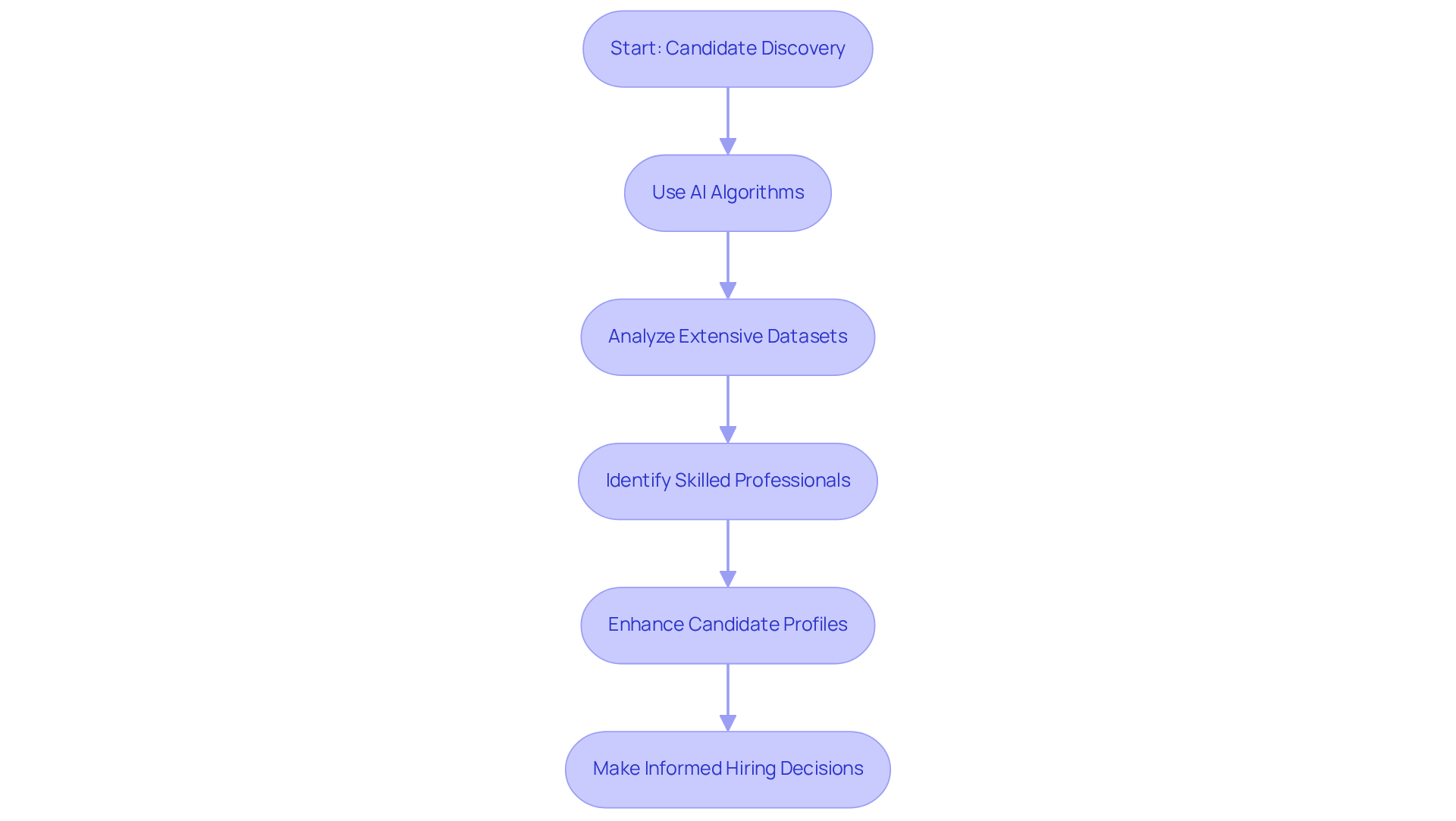
Time-to-Fill: Measure the Duration from Job Posting to Offer Acceptance
Time-to-fill is a critical metric that measures the total duration from when a job is posted until an offer is accepted. For new businesses, understanding hiring velocity metrics for startups is essential to gauge recruitment efficiency. A shorter time-to-fill indicates a more effective recruitment process, while extended durations may reveal underlying issues, such as vague job descriptions or inefficient interview procedures.
Startups must strive to minimize this timeframe by refining their hiring velocity metrics for startups. Leveraging advanced tools like Websets, which offer , can significantly enhance this process. By utilizing the capabilities of Websets, new ventures can swiftly identify candidates with unique attributes, thereby boosting their recruitment efficiency.
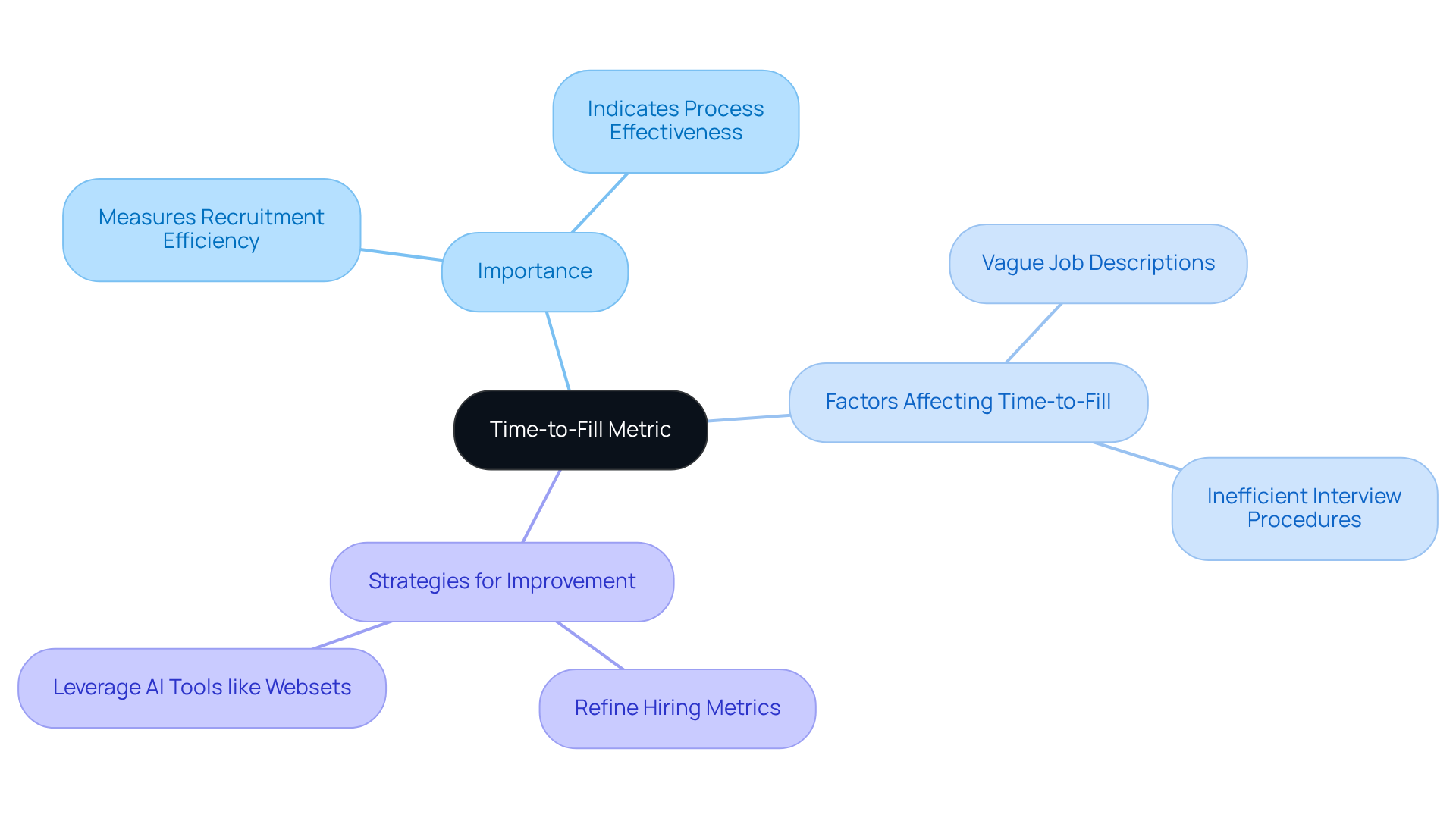
Time-to-Hire: Track the Time from Job Application to Candidate Start Date
Time-to-hire is a critical metric that measures the duration from when an applicant submits their application to when they officially start working. For startups, hiring velocity metrics for startups are crucial as they reflect the efficiency of their recruitment process. An extended time-to-hire can lead to the loss of top talent to competitors. Therefore, startups must streamline their interview procedures and leverage Websets' to enhance their hiring velocity metrics for startups, as well as improve applicant engagement and qualification.
By filtering candidates based on skills, experience, and location, startups can significantly minimize this duration and secure the best talent efficiently. Notably, case studies indicate that companies utilizing Websets' tools have improved their recruitment speed by up to 30%. Startups are strongly encouraged to adopt these strategies to improve their hiring velocity metrics for startups.

Pipeline Velocity: Assess the Speed of Candidate Movement Through the Hiring Funnel
Pipeline velocity, which is one of the hiring velocity metrics for startups, is a critical metric that evaluates how swiftly candidates navigate through the recruitment process, from application to offer acceptance. By meticulously analyzing hiring velocity metrics for startups, new businesses can identify specific stages where candidates tend to drop off or face delays. Enhancing pipeline speed not only leads to quicker hiring durations but also improves recruitment strategy, which is essential for effective hiring velocity metrics for startups.
To significantly boost pipeline velocity, startups should consider leveraging , such as those provided by Websets. These innovative solutions streamline application processes, enhance communication, and deliver data-driven insights that optimize candidate flow. By consistently assessing recruitment phases and implementing AI strategies, organizations can substantially improve their recruitment efficiency.
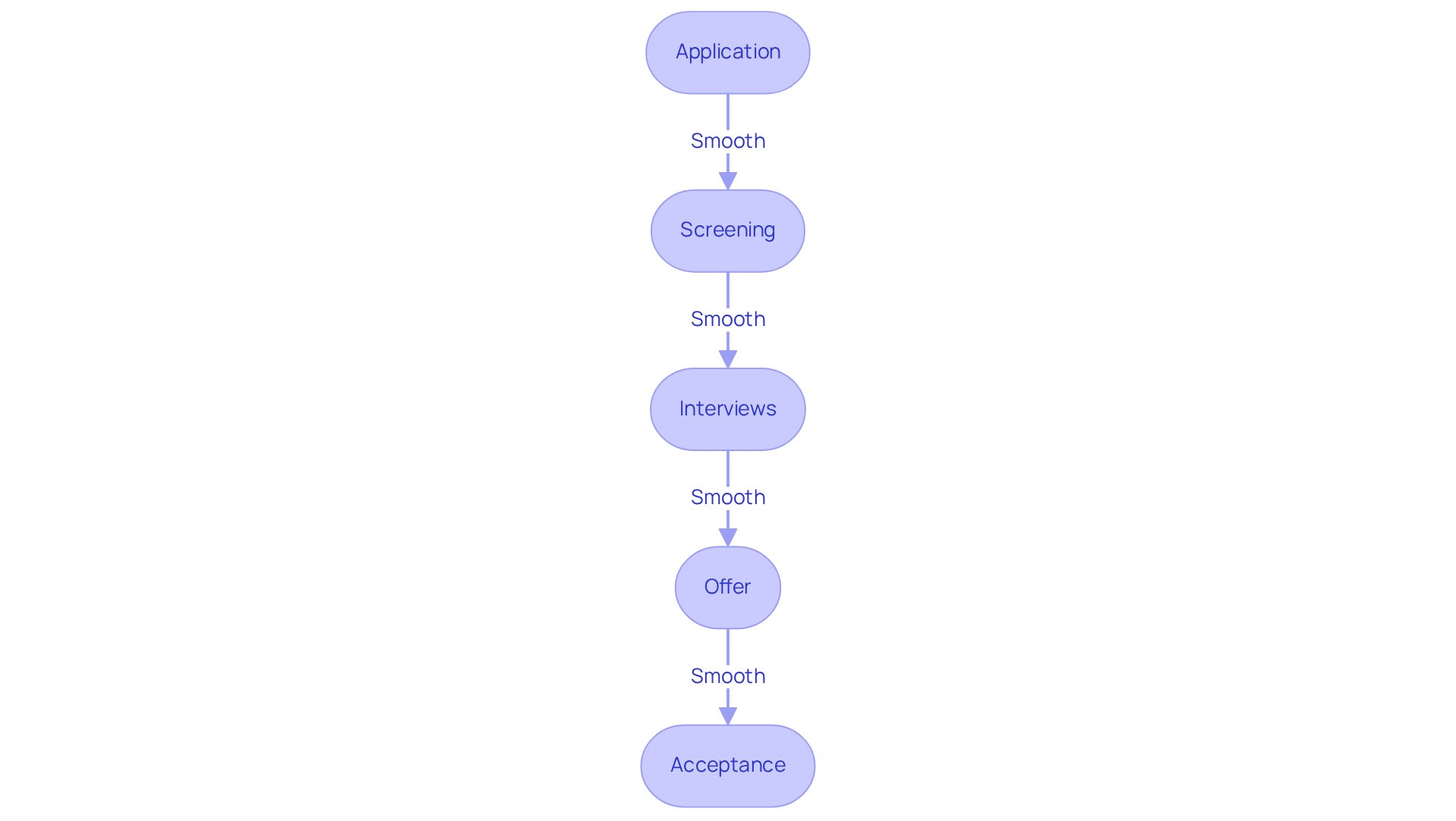
First-Year Retention Rate: Evaluate the Percentage of New Hires Who Stay Beyond One Year
The is a critical metric that measures the percentage of new hires who remain with the company after one year. For new businesses, this figure holds significant weight; high turnover can lead to substantial costs and disruptions.
By focusing on recruiting individuals who align with the company culture and implementing effective onboarding processes, startups can significantly improve their retention rates. Moreover, providing regular feedback and support throughout the first year not only enhances employee satisfaction but also fosters loyalty.
How can your organization leverage these strategies to ensure a stable workforce?
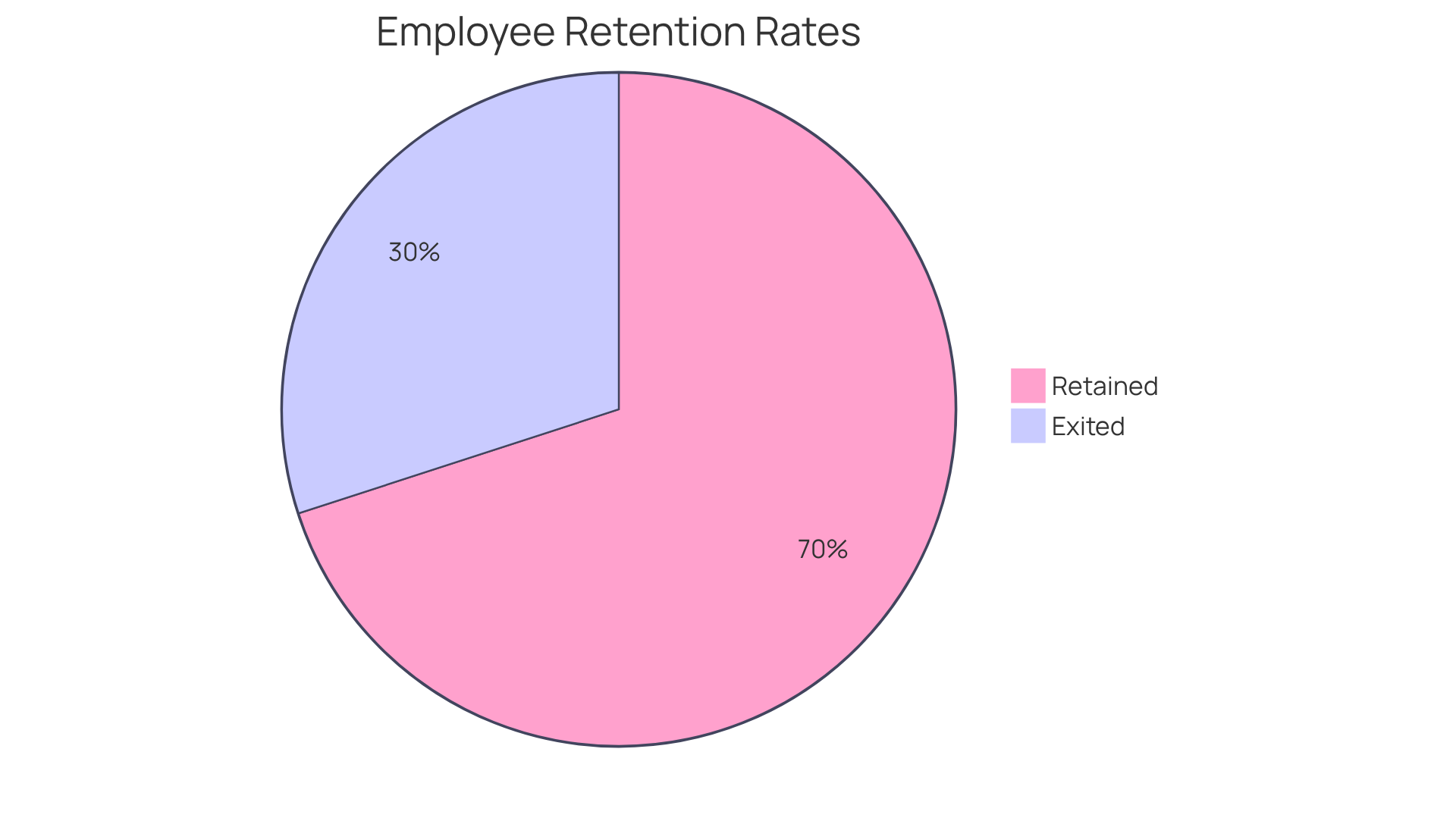
Hiring Manager Satisfaction: Measure the Contentment of Hiring Managers with New Hires
Recruitment manager satisfaction is a critical metric that gauges how pleased recruitment managers are with the candidates selected for their teams. This measure is vital for ensuring that the effectively addresses the organization's needs.
Startups must proactively seek feedback from managers regarding the quality of new hires and the hiring velocity metrics for startups to evaluate the overall effectiveness of the recruitment process. By addressing any concerns raised, new ventures can foster collaboration and significantly enhance future hiring outcomes.
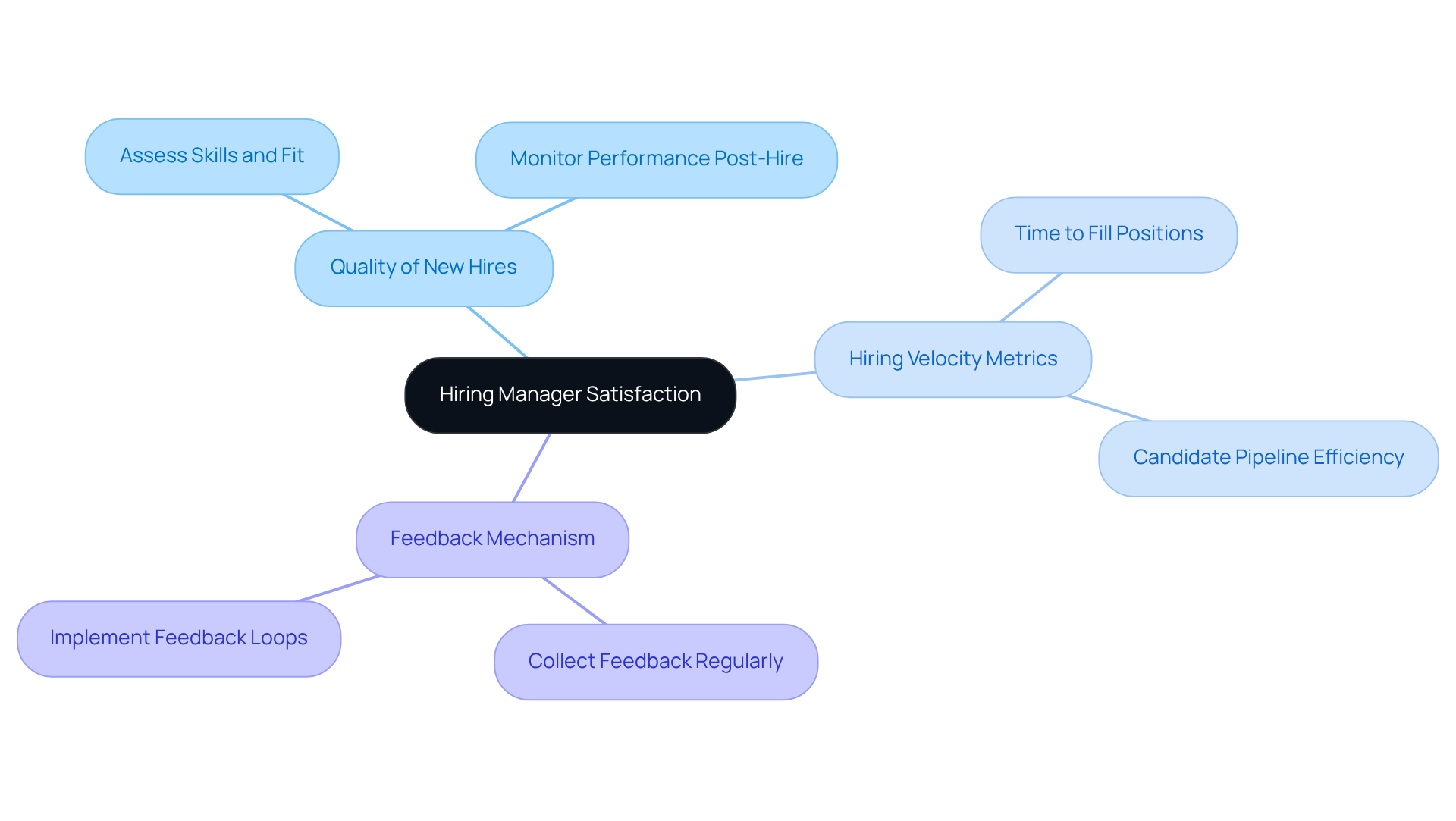
Ramp-Up Time: Determine How Long It Takes for New Hires to Reach Full Productivity
Ramp-up time is the critical period it takes for new hires to achieve full productivity after commencing their roles. Hiring velocity metrics for startups hold significant importance for new businesses, as they directly influence operational efficiency.
To effectively reduce ramp-up time, companies must establish that equip new employees with essential training and resources. Regular check-ins and mentorship initiatives can further facilitate a smoother transition into the role, enabling new hires to contribute effectively and promptly.
By prioritizing these strategies, businesses can enhance productivity and foster a more engaged workforce.
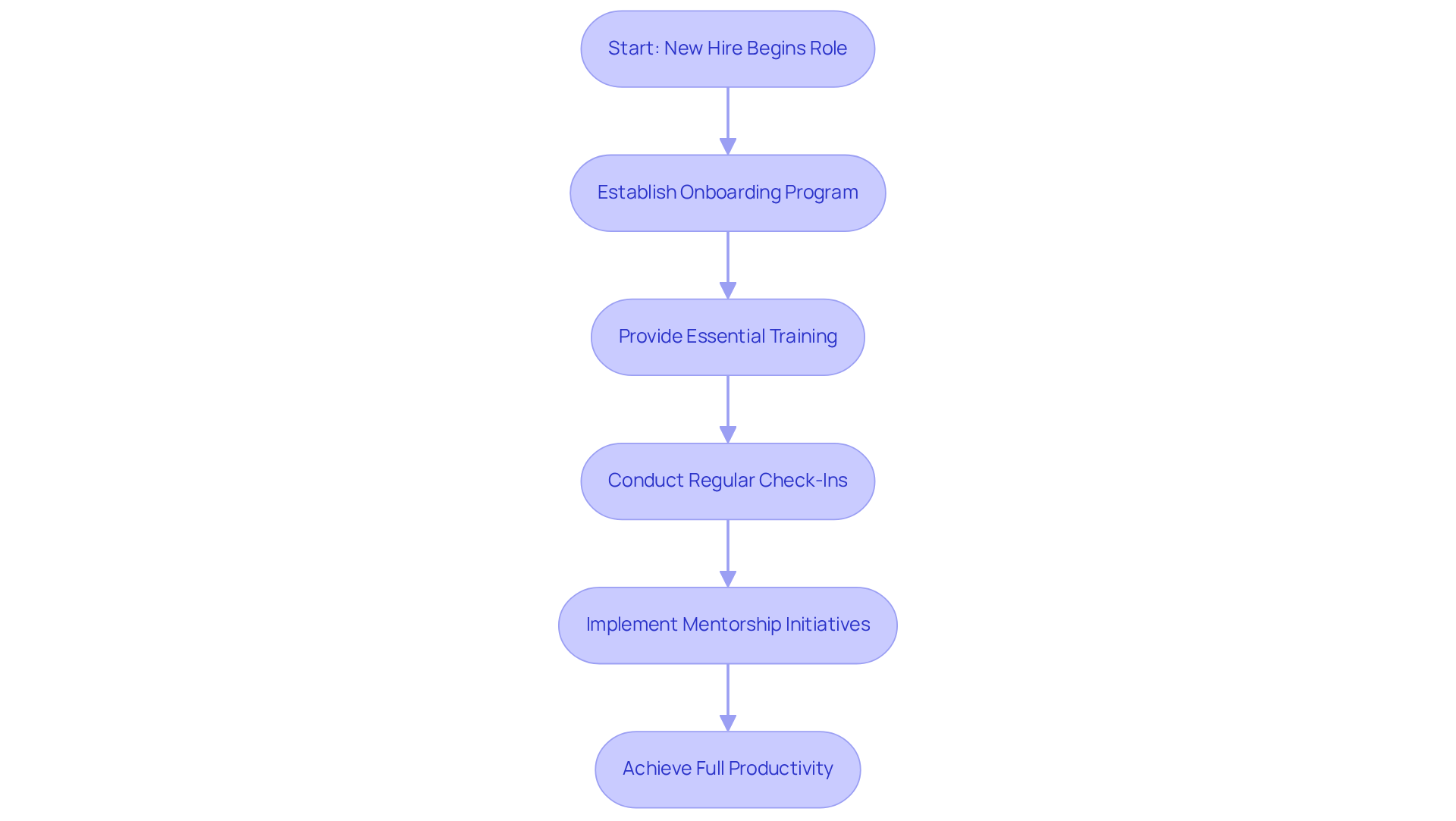
Performance Ratings: Analyze the Effectiveness of New Hires Through Performance Metrics
Performance ratings serve as a critical tool for assessing the effectiveness of new hires in their roles. This metric is vital for emerging businesses, ensuring that their , reflected in their hiring velocity metrics for startups, yield high-quality talent.
By setting clear performance criteria and conducting regular evaluations, startups can pinpoint top performers and identify those who may require additional support. Such ongoing assessments not only enhance immediate performance but also inform future recruitment decisions and training initiatives, which are essential for improving hiring velocity metrics for startups.
Therefore, implementing a structured evaluation process is essential for fostering a productive workforce.
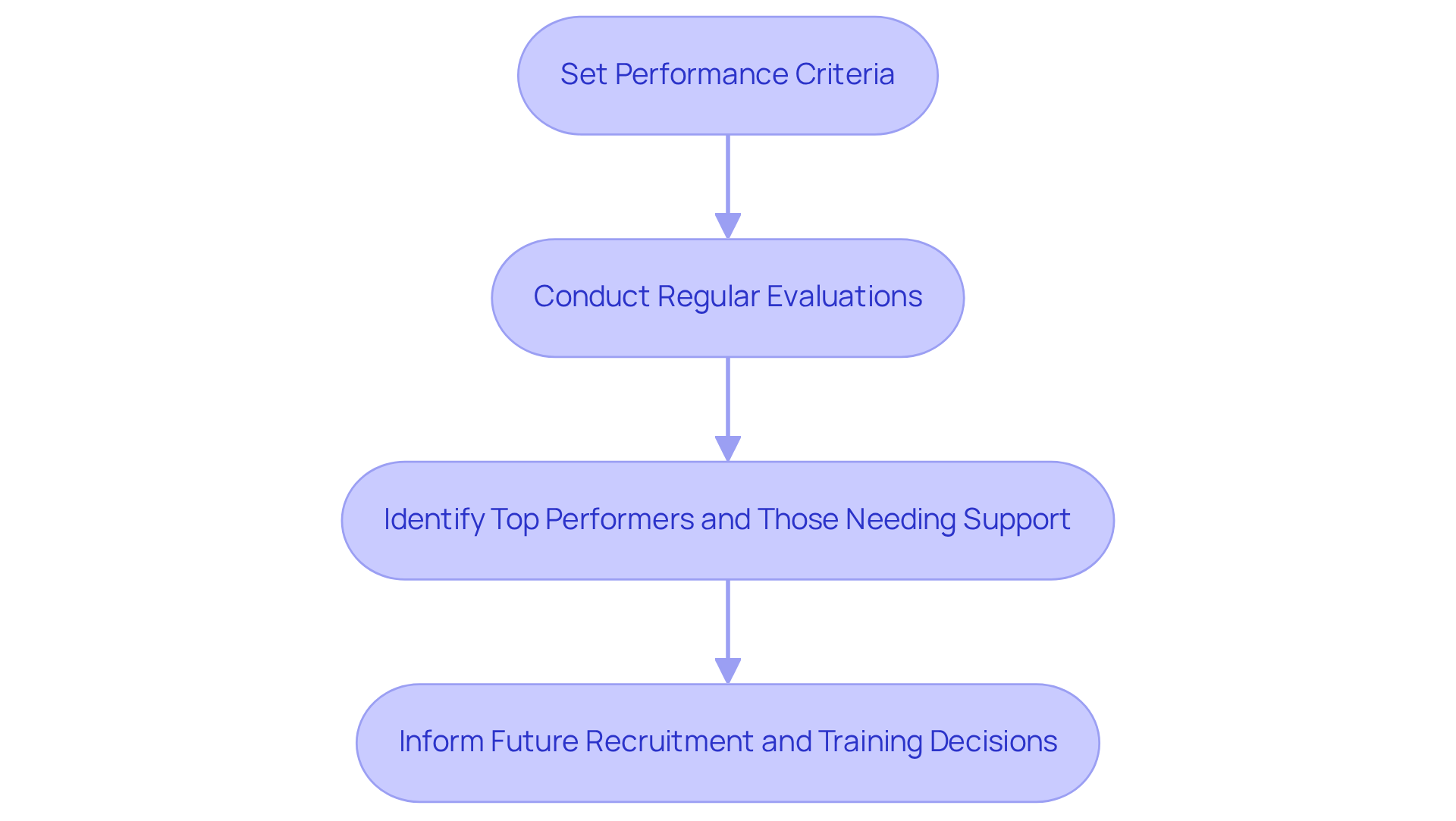
Candidate Experience: Assess the Satisfaction of Candidates Throughout the Hiring Process
Candidate experience is critical; it encompasses how applicants perceive and engage with the hiring process. For startups, hiring velocity metrics are particularly vital, as a positive experience can significantly boost acceptance rates and enhance employer branding. Startups must focus on creating a seamless application process. This involves ensuring and providing timely feedback to candidates. Regularly soliciting input from applicants is essential, as it helps identify areas for improvement and enhances the overall experience. By prioritizing these elements, startups can enhance their hiring velocity metrics, resulting in a more effective hiring process.
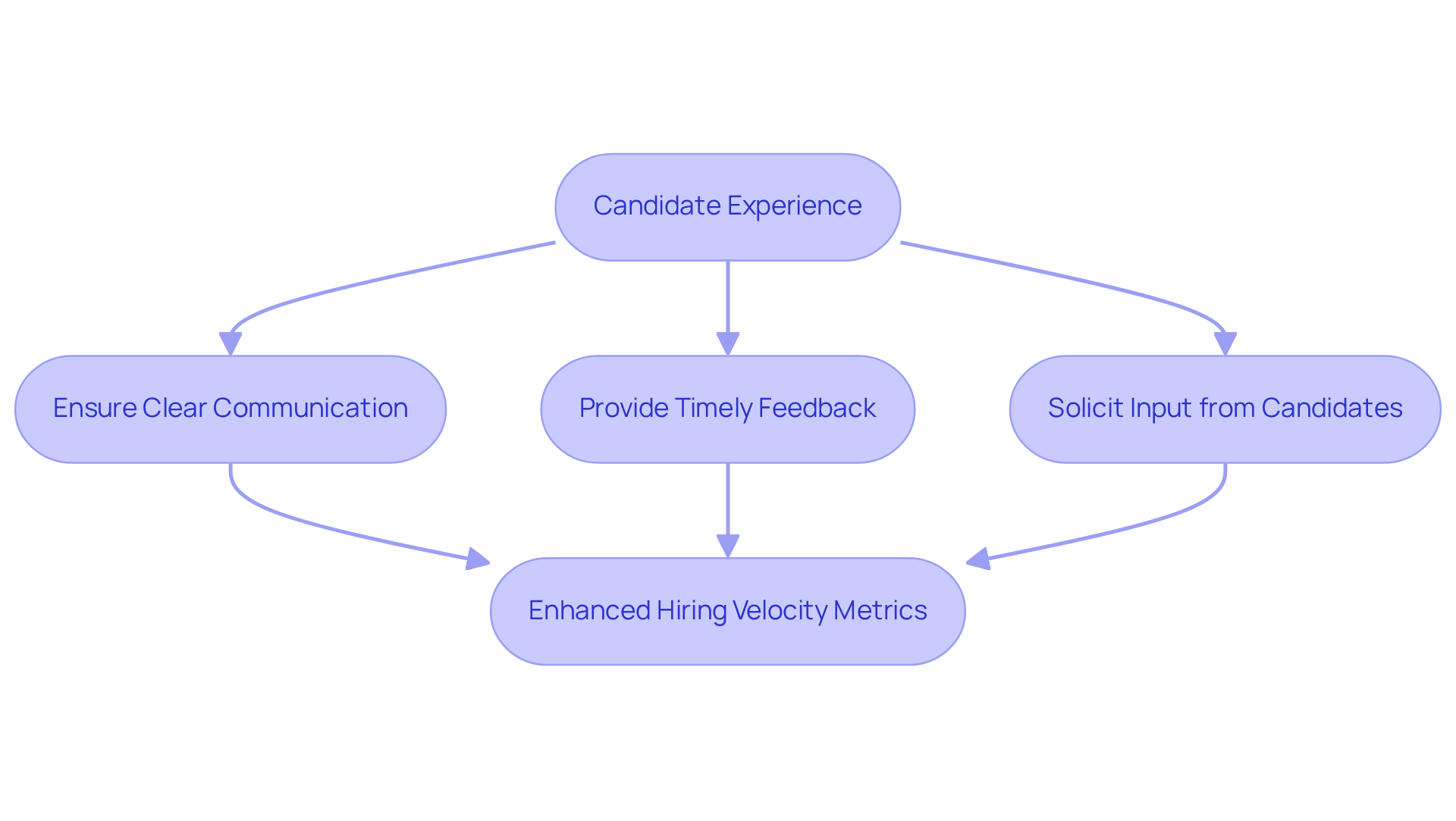
Quality of Hire: Measure the Overall Success of Recruitment Through Performance and Retention Metrics
Quality of hire is a critical metric that evaluates the success of recruitment efforts. It encompasses essential factors such as job performance, retention rates, and cultural fit. For new businesses, hiring velocity metrics for startups are not just about filling positions; they focus on hiring individuals who will make a positive impact on the organization.
By leveraging Websets' AI-driven tools, startups can more effectively analyze hiring velocity metrics for startups. This enables them to and enhance candidate selection processes. These tools offer valuable insights into performance metrics, ultimately improving organizational performance.
Are you ready to elevate your hiring process?
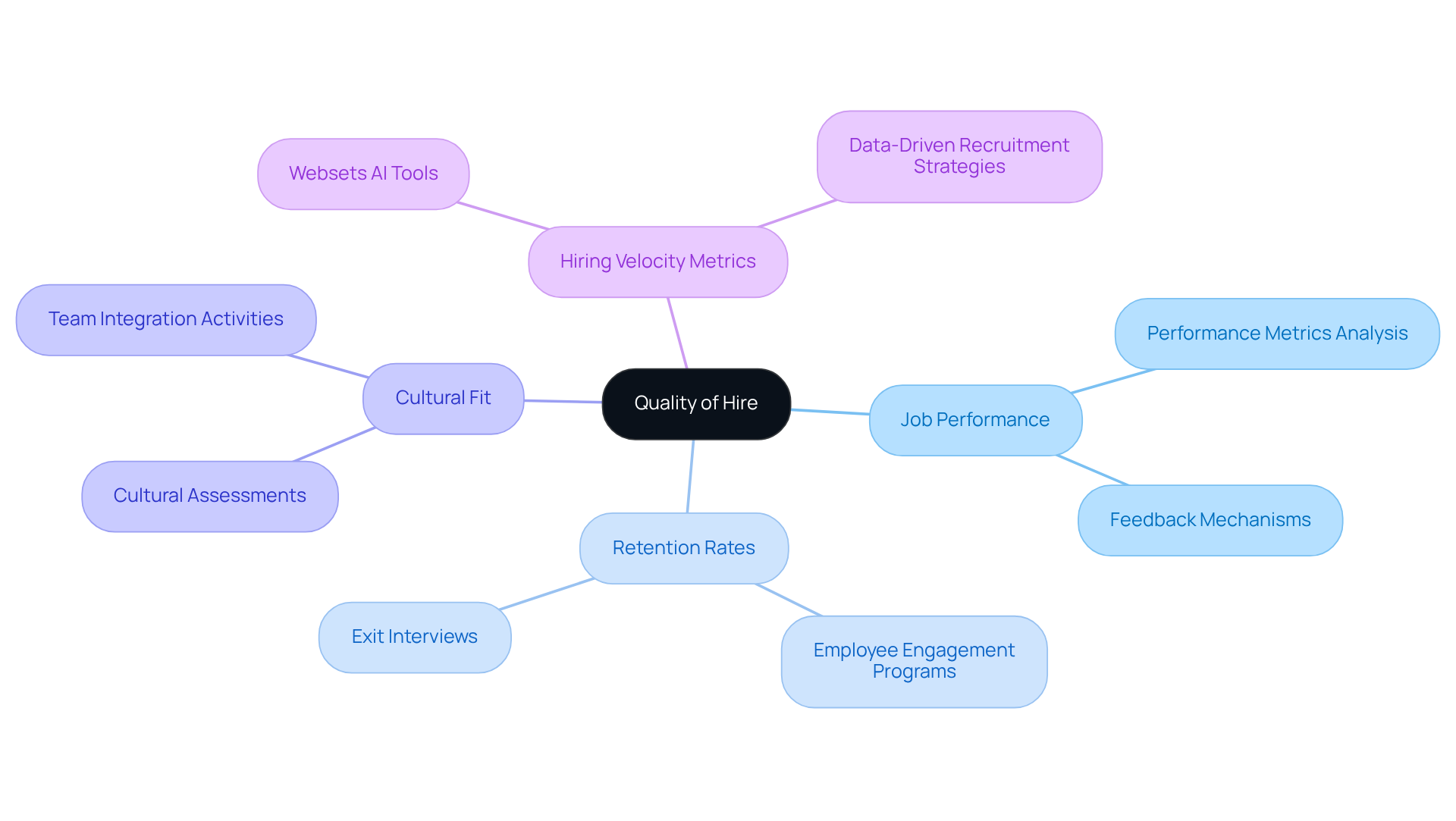
Conclusion
Enhancing hiring velocity metrics is vital for startups seeking to optimize their recruitment processes and attract top talent. By concentrating on metrics like time-to-fill, time-to-hire, and candidate experience, startups can pinpoint inefficiencies and implement targeted strategies that lead to quicker and more effective hiring. The integration of AI-powered tools, such as Websets, is instrumental in this transformation, empowering businesses to make informed decisions based on thorough data analysis.
Throughout this article, we have shared key insights on essential hiring velocity metrics. From assessing pipeline velocity to evaluating the first-year retention rate of new hires, each metric offers valuable information that can assist startups in refining their recruitment strategies. By prioritizing hiring manager satisfaction and candidate experience, organizations can cultivate a positive hiring atmosphere that not only attracts quality candidates but also retains them over the long term.
Ultimately, the importance of these hiring velocity metrics cannot be overstated. Startups must leverage innovative tools and practices to enhance their recruitment processes, ensuring they remain competitive in a fast-paced job market. By adopting these strategies, businesses can achieve not only improved hiring efficiency but also a stronger, more engaged workforce that propels long-term success.
Frequently Asked Questions
What is Websets and how does it enhance candidate discovery?
Websets is an AI-powered platform that revolutionizes talent discovery by enabling startups to quickly identify and connect with skilled professionals. It utilizes advanced AI algorithms to sift through extensive datasets, significantly improving hiring velocity and allowing for quicker position fills without sacrificing quality.
What is the time-to-fill metric and why is it important for startups?
Time-to-fill is a critical metric that measures the duration from when a job is posted until an offer is accepted. For startups, understanding this metric is essential to gauge recruitment efficiency. A shorter time-to-fill indicates a more effective recruitment process, while longer durations may highlight issues such as unclear job descriptions or inefficient interview procedures.
How can startups improve their time-to-fill metric?
Startups can improve their time-to-fill metric by refining their hiring processes and leveraging advanced tools like Websets, which offer AI-driven recruitment solutions. This allows them to swiftly identify candidates with unique attributes, thereby enhancing recruitment efficiency.
What is the time-to-hire metric and its significance for startups?
Time-to-hire measures the duration from when an applicant submits their application to when they officially start working. This metric is significant for startups as it reflects the efficiency of their recruitment process. An extended time-to-hire can result in losing top talent to competitors.
How can startups minimize their time-to-hire?
Startups can minimize their time-to-hire by streamlining their interview procedures and utilizing Websets' AI-driven talent discovery tools. By filtering candidates based on skills, experience, and location, they can secure the best talent more efficiently.
What improvements have companies seen by using Websets?
Companies utilizing Websets' tools have reported improvements in their recruitment speed by up to 30%, indicating enhanced hiring velocity and efficiency in their recruitment processes.




